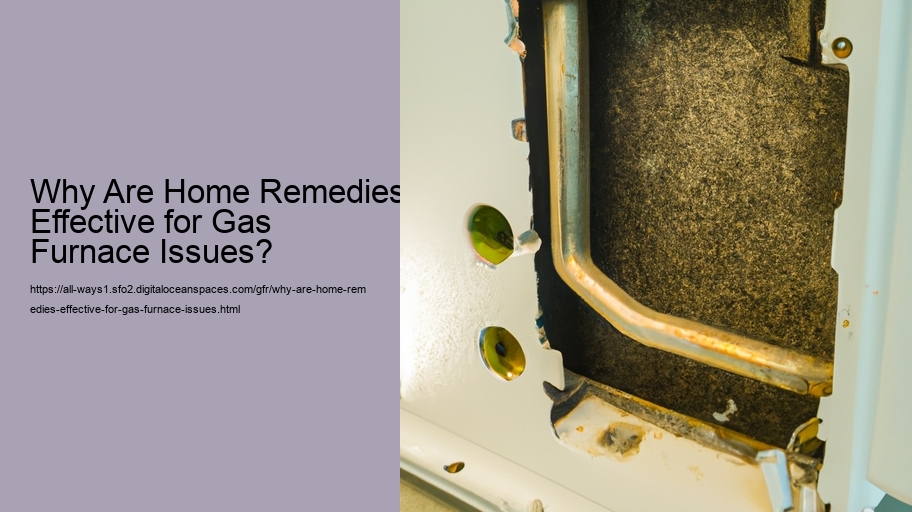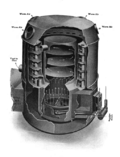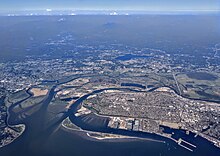Discussion on the simplicity and accessibility of home remedies for quick fixes
Home remedies for gas furnace issues often tap into the wealth of collective wisdom that has been passed down through generations. Call All-Ways Heating & A/C for quality gas furnace repair in Everett. The simplicity and accessibility of these solutions are two key aspects that contribute to their effectiveness in dealing with common problems that homeowners may face with their heating systems.
Firstly, the simplicity of home remedies is one of the reasons why they are so effective. Many gas furnace issues do not require complex tools or specialized knowledge to fix. For example, a furnace that fails to ignite might be resolved by simply checking if the pilot light is on or if the thermostat is set correctly—both straightforward tasks that can be performed without professional help. Moreover, simple maintenance tasks like changing filters regularly can prevent more significant issues from developing.
The accessibility of home remedies further bolsters their appeal. Most households have basic tools and can acquire any necessary items at local hardware stores or even find them already available at home. This immediate availability allows for prompt responses to furnace issues, which is particularly important during cold weather when a fully functional heater is a necessity.
Additionally, home remedies can be cost-effective. Calling in professionals every time there's a minor hiccup with your heating system could lead to substantial service charges. airflow testing By employing simple fixes such as resetting circuit breakers, verifying switch settings, or gently cleaning components like flame sensors using readily available household items such as sandpaper or soft cloths, homeowners save money while also gaining a better understanding of how their system operates.
It should be noted, however, that while many minor issues can be safely addressed through home remedies, there are certain situations where it would be unwise and unsafe to attempt repairs without proper training and equipment—such as dealing with gas leaks or electrical faults within the furnace itself. In such cases, it's essential to recognize limitations and call for professional assistance before attempting any repairs.
In conclusion, the effectiveness of home remedies for gas furnace issues lies in their uncomplicated nature and ease of implementation. While they offer practical solutions for many small-scale problems and encourage self-reliance among homeowners, safety considerations must always remain paramount. Homeowners need to know when a problem is within their capability to resolve and when it's time to seek help from professionals who have the expertise required for more serious repairs.
Explanation of how basic maintenance tasks can prevent larger problems
The integration of basic maintenance tasks into the routine care of a gas furnace is akin to the practice of preventive medicine for human health. Just as regular exercise and a balanced diet can stave off many illnesses, consistent upkeep of your heating system can prevent larger issues from developing. Let's delve into how these simple actions contribute to the overall efficiency and longevity of a gas furnace.
Firstly, one must consider the role that cleanliness plays in maintaining a gas furnace. Dust, dirt, and debris are more than mere nuisances; they act as insidious agents that gradually degrade performance. When filters become clogged, airflow is restricted, causing the furnace to work harder and less efficiently. This not only increases energy consumption but also puts undue stress on components, potentially leading to premature failure. Regularly replacing or cleaning air filters is an effortless task that ensures optimal airflow and keeps internal parts from overexertion.
Secondly, inspecting and keeping vents unobstructed is another straightforward yet crucial step. Blocked vents can cause an imbalance in the distribution system leading to uneven heating and cold spots within a home. Moreover, this obstruction forces the furnace to run longer cycles in an attempt to reach desired temperatures throughout the space it serves—again taxing the system unnecessarily.
Additionally, scheduled professional inspections play a pivotal role in preemptive maintenance. Skilled technicians can identify wear-and-tear on critical components like heat exchangers or ignition systems before they fail completely. Early detection of such issues allows for repairs or replacements at a fraction of the cost and inconvenience compared with dealing with an unexpected breakdown during peak usage times.
Furthermore, monitoring the flame color inside your gas furnace provides insight into its condition; a blue flame signifies proper combustion while yellow or orange flames may indicate incomplete combustion—a sign that your furnace requires attention from qualified personnel.
Lastly, hearing strange noises emanating from your furnace shouldn't be dismissed as quirks of an aging system. Rather they should be investigated promptly as they could signify deeper problems such as loose belts or failing motors which when addressed early on could save you from costly repairs down the line.
In conclusion, performing basic maintenance tasks is not merely about keeping one’s heating system operational—it's about safeguarding against larger disruptions that could lead to discomfort, significant financial outlays for repair or replacement, and even safety hazards associated with malfunctioning gas furnaces. The effectiveness of these seemingly minor remedies lies in their cumulative impact on preserving both functionality and peace of mind for homeowners who rely on their gas furnaces during cold seasons.
Overview of the cost-effectiveness of DIY solutions compared to professional services
The question of cost-effectiveness when it comes to DIY solutions versus professional services for gas furnace issues is multifaceted and requires a careful analysis of the various factors involved. Home remedies can often provide an immediate, affordable fix to minor problems, potentially saving homeowners significant amounts of money. furnace tune-up However, understanding why these home remedies can be effective while also weighing their limitations is critical.
DIY solutions for gas furnace issues usually involve simple fixes that do not require specialized tools or extensive technical knowledge. For example, changing a dirty filter, resetting a tripped circuit breaker, or making sure the thermostat is set correctly are all tasks that can be performed by most homeowners with minimal risk. ignition system repair These actions can restore heat to a home quickly and prevent small problems from escalating into larger ones.
One key advantage of DIY interventions is cost savings. Professional HVAC services incur labor charges in addition to any necessary parts or components. By contrast, home remedies often utilize items already found within the household or require inexpensive replacements parts that are widely available at local hardware stores.
Moreover, there's the convenience factor: DIY solutions mean not having to wait on busy service schedules — an especially crucial consideration during peak heating seasons when professionals may be booked out days or weeks in advance.
However, it’s important to recognize that DIY repairs have their limitations. Gas furnaces are complex systems that involve combustion and exhaust; improper handling can lead to dangerous situations such as gas leaks or carbon monoxide poisoning. Some issues also require diagnostic skills beyond the average homeowner's expertise.
Professional services offer thorough inspections, expert repairs, and maintenance work that ensure a furnace operates safely and efficiently over time. Professionals have access to advanced diagnostic tools and are trained to spot potential problems before they become serious. Furthermore, professional work often comes with warranties or guarantees that provide additional value and peace of mind.
When considering whether a DIY solution is appropriate for a particular furnace issue, homeowners should assess the complexity of the problem and their own skill level. Simple troubleshooting measures might be perfectly adequate for minor concerns but seeking professional help is always recommended if there’s any doubt about safety or if the problem persists after initial attempts at repair.
In conclusion, while home remedies for gas furnace issues can indeed be cost-effective and efficient for addressing straightforward problems rapidly without waiting on professional help – which may come with higher costs – it remains essential for homeowners to recognize when an issue surpasses what should responsibly be handled without expert intervention. The balance between deciding on a DIY fix or hiring a professional ultimately hinges on considerations related both to safety concerns and long-term functionality of the heating system in question.
Insight into the empowerment and satisfaction from solving issues independently
The allure of home remedies for gas furnace issues lies not only in their potential cost-effectiveness but also in the insight into the empowerment and satisfaction that homeowners gain from solving problems independently. When a gas furnace malfunctions, especially during the cold seasons, it can cause discomfort and even distress. The immediate reaction might be to call a professional, but this isn't always necessary or feasible. Home remedies offer an alternative route that can be both enlightening and gratifying.
Empowerment stems from knowledge and skill acquisition. By understanding how a gas furnace works and learning to troubleshoot common problems, homeowners develop a sense of control over their environment. This is particularly relevant when considering the intricacies of a gas furnace – from pilot lights to filters, thermostats to blower motors – each component plays an essential role in efficient operation. Gaining expertise in these areas enables individuals to address simple issues without external assistance.
There's also satisfaction derived from successfully diagnosing and fixing one's own appliances. It invokes a sense of pride and self-reliance that transcends monetary savings. Completing a repair independently reinforces personal capability and resilience, traits that are invaluable in all walks of life.
Moreover, there’s an educational aspect to tackling home repairs on one's own. Each challenge presents an opportunity to learn something new about the systems we often take for granted within our homes. This knowledge doesn’t just apply to immediate fixes; it builds a foundation for better maintenance practices that can prevent future issues.
Of course, safety is paramount when dealing with any appliance issue – especially those involving gas furnaces where there’s risk of carbon monoxide poisoning or explosions if mishandled. Home remedies should never compromise safety standards; instead, they should be pursued with caution and respect for the appliance’s operations manual guidelines.
In essence, while professional services are indispensable for complex or dangerous problems, many minor issues can be effectively resolved through home remedies backed by thorough research and careful application. The resulting empowerment and satisfaction accentuate why such approaches are revered by many as not just solutions but as personally enriching experiences within the domain of household management.
Consideration of safety precautions and when to seek expert help
The allure of home remedies for gas furnace issues often lies in their simplicity, cost-effectiveness, and the immediate gratification they can provide. Many homeowners take pride in their ability to troubleshoot and fix problems without outside help, leveraging a vast repository of online tutorials and DIY forums. However, while some minor issues can indeed be managed with a set of basic tools and a bit of know-how, it's critical to approach such tasks with an abundance of caution—especially when dealing with gas appliances.
Safety is paramount when addressing furnace concerns due to the inherent risks associated with gas-powered equipment. Gas furnaces involve combustible materials and have the potential to emit carbon monoxide if not functioning correctly. Therefore, it's essential to consider several safety precautions before embarking on any home repairs.
Firstly, before attempting any remedy, ensure that you've read and understood your furnace's manual. Knowing the specifics of your model aids in identifying parts safely and understanding how they should function under normal conditions.
Secondly, always switch off the power supply to your furnace at both the thermostat and the breaker box before starting work. This step prevents accidental ignition or electrical injury while you're inspecting or servicing components.
Thirdly, if you smell gas—described as a rotten egg-like odor—do not attempt to solve the problem yourself. Instead, evacuate the area immediately and contact emergency services or your gas company from a safe location. Attempting to rectify a gas leak on your own is extremely dangerous.
When it comes to specific tasks like cleaning air filters or checking thermostats, these are generally considered safe for most homeowners to handle. Replacing filters regularly helps maintain airflow efficiency and prevent overwork that could lead to more significant issues down the line.
However, complicated repairs involving internal components like heat exchangers or control boards should warrant seeking expert help. These intricate parts require specialized knowledge and experience for proper handling; mistakes here could compromise not only your heating system but also household safety.
Additionally, even if you feel capable of performing certain repairs after conducting research, there is value in having an expert inspect your work afterward. Certified technicians can confirm that everything has been reassembled correctly without posing any future risk.
Furthermore, routine professional maintenance checks are essential for long-term appliance health—they offer peace of mind by ensuring all elements operate within designed parameters while also spotting potential hazards early on.
In conclusion, while home remedies may prove effective for simple fixes related directly to user maintenance tasks like filter changes or thermostat troubleshooting on gas furnaces—safety must never be compromised in pursuit of self-sufficiency. Recognizing one’s limitations is crucial: When complex components malfunction or when there’s uncertainty about how best to proceed—a skilled technician’s expertise isn’t just recommended—it’s indispensable for protecting both property and lives from harm caused by well-intentioned but potentially hazardous amateur repair attempts.










